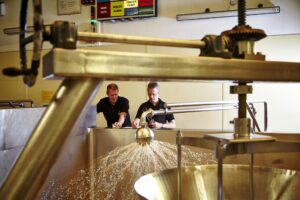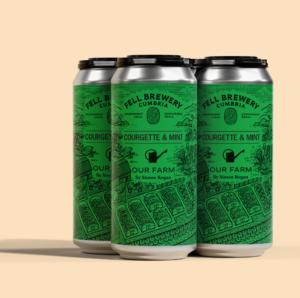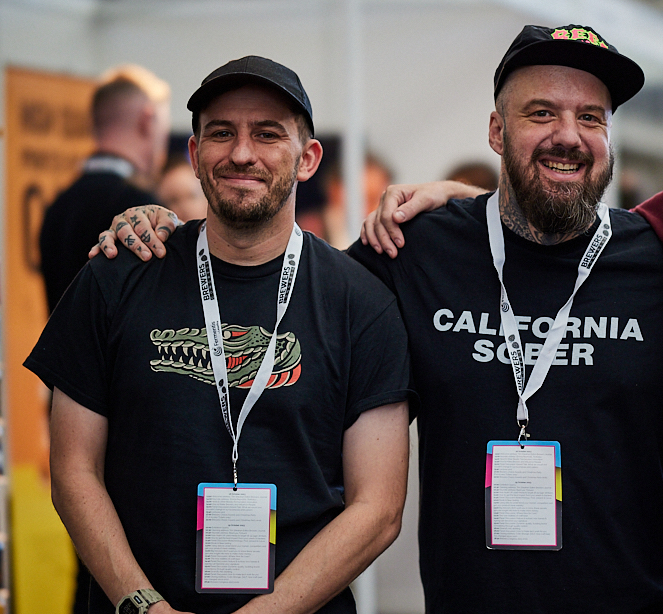Hello reader, and welcome to the universe of brewers yeast. I’m Andrew Paterson Technical Sales Manager UK, Ireland and Scandinavia, and it is my job today to focus the microscope on this world, to investigate its trends, to resolve misconceptions, to deconstruct arguments, and to explain intricacies, all with the end goal of unearthing for you, the brewer, the ultimate guide to brewing yeast in 2023.
To start, let us consider the beer styles that might be popular in 2023. Lallemand recently put this very question to contributors to its quarterly newsletter. The answer was unanimous, from Mitch Steele to Mark Dredge, IPA was the reply. From the beginning of the Craft Beer revolution IPA has been the ubiquitous constant, sure, it has changed over the years, but it has always been there.
Whether sparkling bright, crisp and bitter as a West Coast IPA; pale, hazy and intensely hoppy as a NEIPA or, shudder; thin and fizzy as a Brut IPA. So, we can take it as a given that IPA is not going to go away, but might it mutate and become something else, a related style of IPA perhaps?
Already the BJCP lists over eleven different styles of IPA, so evolution seems likely. If this is the case, what will the role of yeast be in this development? Early contenders for a new substyle are Thiolised IPA, more on that later, and Cold IPA.
Both spin out of the wider IPA category. Will either last the test of time and take their place among the beer style royalty? Or will they go the way of the Brut IPA, mostly forgotten, and occasionally joked about when discussing ideas for a collaboration.
Beyond IPA, what else could be coming down the track in 2023? It has long been the opinion of the author that lager is overdue a craft renaissance, and I am glad to say the contributors to our current newsletter agree. In recent years, lager-focussed breweries such as Utopian, Braybrooke and Lost and Grounded have started an underground craft lager movement which seems to be gathering momentum, even spawning its own internet lexicon among craft beer aficionados.
The so called ‘crispy boi’, is here to stay, even if I will personally struggle to call it that. Apart from being a truly excellent and varied style in its own right, long overlooked by craft breweries in the UK, the Covid epidemic has driven a necessary drift away from continuous specials and, ‘no core range’ policies, to a need for brand loyalty from the consumer. The core range has returned with a bang, and Lager and IPA make up the backbone, no range is complete without at least one of each.
Yeast Technology
So, we have a good idea of the beer styles likely to take the craft beer market by storm this year – but what are the specific trends in yeast, and how do these trends apply to the production of these styles? Long the forgotten ingredient in brewing, yeast is having something of a renaissance these days, which is borne of two broad biotechnologies.
The first is more of a classical genetics approach, whole organism strain selection, either by Adapted Laboratory Evolution (ALE), or by Selective Breeding. In the former technique yeast are forced to reproduce for many thousands of generations in a stressful environment, with the aim of introducing protective mutations, which confer advantageous characteristics in the newly generated strain.
One example of this is IONYSwf™ from our colleagues in Lallemand Oenology, a yeast designed to counteract the ever higher sugar levels in grape musts caused by climate change. This yeast naturally produces less alcohol and diverts more carbon towards the production of glycerol and organic acid.
The latter technique of selective breeding has been used to great effect by Lallemand Brewing, in conjunction with our partners at Renaissance Bioscience in Vancouver, to create a unique lager strain. Lalbrew Novalager™ posseses a lower proportion of the cryotolerant Saccharomyces eubayanus parent genome, the upshot being that one can create lager at warmer temperatures with no adverse flavour implications, saving both time, energy and of course money.
The second technology contributing to the renaissance in brewing yeast is Genetic Engineering. There are even GMO specific yeast labs, such as Berkeley Yeast in the United States, which only produce genetically modified strains. Genetic Engineering offers are more targeted approach to strain creation than Selective Breeding, or Adapted Laboratory Evolution.
Characteristics based on single genes, or even whole metabolic pathways can be introduced into existing strains, to create desirable phenotypes for the brewer. In recent years Lallemand has worked with Mascoma, a Lallemand company in the United States, to create the now well-known Sourvisiae® product.
This yeast has been created using a genetic technique called homologous recombination, to insert a gene coding for the production of the lactate dehydrogenase enzyme. This allows the yeast to create lactic acid as it ferments. Another GMO strain, Mascoma BerryvisiaeTM will soon be launched in the United States, which produces the natural ketone [4-(4-hydroxyphenyl)butan-2-one] responsible for the raspberry aroma in fruit.
With the rush towards new strain creation, the subject of intellectual property protection has risen to the fore. Strains produced using modern biotechnology such as Genetic Engineering, and Advanced Breeding Techniques are expensive and time consuming to produce, and so the majority of these strains are patent or IP protected in some way.
This prevents their production by companies other than the creator. As seen in the hop world, this could lead to an arms race among yeast producers to create the most exciting proprietary yeasts, leading to a healthy variety of new and innovative strains for the brewer.
Thiols
Any article on brewers yeast in 2023, wouldn’t be complete without a discussion of the previously mentioned thiolysed yeast strains. These strains first started to appear on the market back in 2020. The strains take their name from their ability to release bound, polyfunctional volatile thiols from both hops and malt by way of an enzyme called beta lysase.
These are the chemicals responsible for the positive blackcurrant, passionfruit and sauvignion blanc notes in hoppy beer, but also for the more negative catty, onion and garlic flavours. The infamous light struck character is also a thiol, albeit derived from a different mechanism. While there are some naturally occurring wine yeasts which purport thiol release characteristics, the pathway is more or less inactive in the high nutrient environment of a brewers wort.
Available thiolysed strains are exclusively laboratory bred or genetically modified to enhance this effect. Some brewers are even using these strains in conjunction with a precursor rich extract of Sauvignon Blanc grape skins called Phantasm Powder, in order to further amplify the concentration of thiols in the final product.
At the moment the argument seems to be that more thiols are inherently a better thing, but I would add caution and nuance. Yes, you can probably create more thiols in your product, but are these good thiols, or bad thiols? Current yeasts do not differentiate the good from the bad. Are certain hop varieties, or even malts more prone to the creation of positive flavours over negative ones. The answers to these questions are currently unanswered, and will likely remain so for some time
The state of the market 2023
I think we would all agree that 2023 is likely to remain a challenging trading environment. The causes are well known, supply chains are still hit by the long hangover from Covid-19, and war in Ukraine has caused huge spikes in energy costs and associated worldwide inflation. Understandably, and perhaps inevitably, this has driven brewers to look at their input costs in greater detail.
From my own experience of the market, it is evident that some brewers are turning to suppliers of bargain basement raw materials. Again, I would add caution here, the old moniker of, “you get what you pay for” exists for a reason. I am old enough to remember the beginnings of the Craft Beer movement in the UK. Then, in a bid to differentiate themselves from the global brewers, craft beers were advertised as ‘brewed with the choicest hops, malts and yeasts’. In my opinion, it will truly be a dangerous moment for the craft beer market if this ceases to be the case.
Summing up
The above is just my educated opinion of what might drive the beer and yeast market in 2023. No doubt there will be some surprises and trends that I didn’t see coming. However, if there was one thing I would take away, it is that if you take your time, and brew the highest quality IPA and Lager that you can, you won’t go far wrong.









